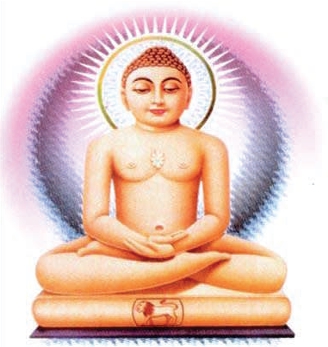
The Jaina Sect of the Yapaniya
Apart from the Digambaras and the Svetambaras there was, in the past another sect of the Jains. This sect, known as the Yapaniya existed in Karnataka at least from the 5th to the 14th century. This we know from the epigraphic evidence. The first and the last inscriptions that mention them and which have been discovered so far, belong to these centuries respectively and all the inscriptions which mention them have been found in Karnataka only.
The first inscription that mentions the Yapaniya is by Mrigesavarman (AD 475-490) a Dadamba king of Palasika. The Kadambas themselves were Brahmans, but this king erected a Jain temple in the city of Palasika, and made a grant to the sects of Yapaniyas, Nirgranthas, and the Kurchakas. The Nirgranthas were of course the Digambaras, but who the Kurchakas were is not clear [1].
The last inscription which mentions the Yapaniyas was found in the Tuluva country of southwest Karnataka. It is dated Saka 1316 (AD 1394).
Thus we know that the sect existed for at least a thousand years. We can also make the guess that the sect was ultimately absorbed in the Digambara community. The Yapaniyas worshipped nude images of the Tirthankaras in their temples. Some of these temples with their images still exist and the people who worship in these temples nowadays are Digambaras. The Yapaniya monks themselves also used to remain nude. There was perhaps, therefore, not much difficulty in such absorption, especially if the sect ultimately dwindled to a small number.
Nothing authentic is known about how the Yapaniya sect originated. Devasena records a tradition in his Darshanasara (mid-11th century that the Yapaniya-sangha was started by a Shvetambara monk in the year 205 after the death of king Vikram. Since however, the tradition is very late, not much reliance can be placed on it. However, one thing is clear. The Digambaras believed that the original affiliation of the Yapaniyas was with the Svetambaras, and the Digambara author Indranandi counted them as one of the five improper or false sects (Jainbhasa) of the Jains. The five included the Svetambaras also.
The Shvetambara author Gunaratna (15th century) on the other hand makes the definite statement that the Digambaras were divided into four sanghas, namely Kastha, Mula, Mathura and Gopya or Yapaniya. These last that are the Gopyas or the Yapaniyas differed from the other three sects in three matters: they used the salutation dharma-labha (the other three used dharma virddhi), they believed that the kevalin lived on food, and they allowed women to find salvation. These last two beliefs would put the Yapaniyas definitely in the Shvetambara camp. The net result was the neither the Digambaras nor the Svetambaras wanted to own the Yapaniyas. Indeed this is how Monier Williams would derive the word "Yapaniya" from the root 'ya' meaning 'expelled' [2]. So the Yapaniyas were perhaps those who wandered away after being expelled by both the communities.
It is not clear whether the Yapaniyas had any separate sacred texts of their own. There is some references to Yapaniya tantra by the Digambara author Harighadra. But no such tantra is found at present. Perhaps, for religious purposes, the Yapaniyas used the Shvetambara sacred texts, for there is nothing against their principal dogmas in these works.
The Yapaniyas are a matter of only historical curiosity now. Indeed, except for their one great grammarian, Shadatayana, there is no reason to remember them. That Shaktanayana who was a contemporary of the Rashtrakuta king Amoghavarsa (c. 817-877), was a Yapaniya we know from the note by Malayagira in his commentary on the Nandi-sutra.
All the available commentaries on the Shubdanushasana (grammar) of Shakatayana are by Digambara authors who appear to have taken this grammar for their own. On the other hand two other works the Stri-mukti-prakarana and the Kevali- bhukti prakarana which are also said to be by Shakatayana are found only in the Shvetambara collections. Thus while one work of Shakatayana is accepted by the Digambaras, his two other works are accepted by the Svetambaras only. It will be recalled that the position is somewhat similar in the case of Umasvami or Umasvati also. While both the main sects of the Jains accept his great work the Tattvarthadhigama-Sutra, the author's own commentary on this work is acceptable to the Shvetambaras only. It is on this analogy that Nathuram Prami has conjectured that Umasvami was a Yapaniya, for there is nothing else to support Premi's conjecture [3].
Kurchakas (and no other sect) are again mentioned in a copper plate grant of Havirvarma of the same dynasty. Nathuram Premi thought that Kurchaka was a Digambara sect (Nathuram Premi, Jain Sahitya aur Itihasa, Bombay ²1956, pp. 559-563).
Monier Williams, Sanskrit English Dictionary, p. 849. He also gives the term Yapana as the name of a Jain sect. Perhaps this was another name of the Yapaniyas.
All the available information on the Yapaniyas was summarized by A.N. Upadhyaya in his essay "Yapaniya Sangha-a Jain Sect" in the Bombay University Journal of May 1933. Some more epigraphs which mention the Yapaniyas have been discovered since then. The additional informations available from these epigraphs are only the names of a few more ganas into which the Yapaniya sangha was divided.